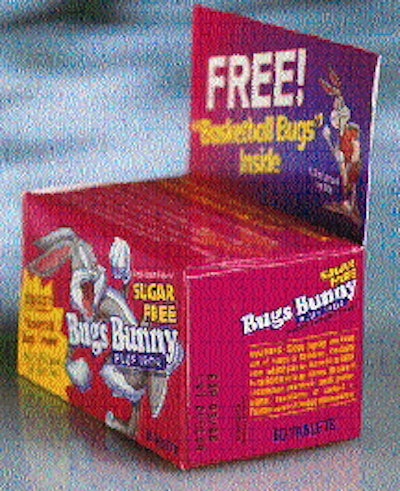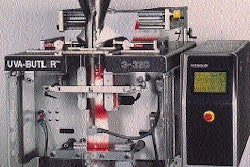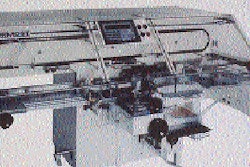
Manufacturers that make capsules, tablets and pills with more than 30 mg of iron may be saddled with new warnings, and could be required to use single-dose packaging. Many supplement and drug companies will have to tear up the labels on their iron supplements and vitamins if the Food and Drug Administration (FDA) finalizes a controversial proposal that has caused a collective gnashing of the industry's teeth. Adding to the noise have been the outcries of dietary supplement manufacturers, who would also have to shift to unit-dose packaging. The FDA proposal, published in November 1994, uses the Federal Food, Drug and Cosmetic Act as a jumping-off point to require a warning statement on all products containing elemental iron. The act makes misbranding of a product illegal, and cites misleading labels as one means of misbranding. FDA's proposed warning is different from the voluntary warning suggested by the Nonprescription Drug Manu- facturers Assn. in September 1993. Most vitamins for children-the Flintstones and Bugs Bunny brands of the world-carry the NDMA warning in small print adjacent to the nutrition label on the back of the package. Manufacturers of children's vitamins would not be affected by the second part of the proposal: that all products containing more than 30 mg of iron be put in unit-dose packaging. This would mostly affect dietary supplements sold in health food stores. The Nutritional Health Alliance (NHA), which represents both consumers and some companies in the health food industry, argues the FDA has no authority to require unit-dose packaging. It argues that authority rests with the Consumer Product Safety Commission (CPSC) under the Poison Prevention Packaging Act. The antipathy of the health foods and vitamin industries for the FDA proposal became a political issue during debate on the Senate floor in mid-July on Sen. Robert Dole's (R-KS) regulatory reform bill. In a nutshell, that bill (S. 343) would require regulatory agencies to do risk assessments, and perform cost-benefit analyses on proposed regulations estimated to cost industry more than a certain dollar threshold. The Dole bill does not mention the proposed FDA rule on iron supplements specifically. But the bill allows interested parties to petition federal agencies to embargo rules that are at an early stage of formulation. With that possibility in mind, Sen. Paul Simon (D-IL) offered an amendment on the Senate floor July 14 exempting from the bill's provisions "regulations designed to protect children from poisoning." It passed by a voice vote, which indicates it also had Republican support. "Because of the petition language in the Dole bill, the iron warning proposal could have been subject to endless delays and reconsideration," explains a Senate source, who says that Simon introduced his amendment at the behest of the FDA. All of this is moot, of course, until the Senate passes the Dole bill, which it failed to do during three different votes in July. But Robert Brouse, vice president of government relations for the NDMA, says he expects the Dole bill to pass this fall. If it does, it will ostensibly include the Simon amendment. But a previously-passed House regulatory reform bill does not include a Simon-like amendment. A conference committee would have to deal with that disparity. NPDN supports FDA regulation on iron that is "reasonable, rational and responsible," states Brouse. The FDA proposal stems from the agency's concern about children ingesting large quantities of iron. Some 37 accidental deaths from iron poisoning have been reported since the mid-1980s, according to the FDA. The Consumer Product Safety Commission (CPSC) already requires child-resistant packaging for iron supplement products containing more than 250 units of elemental iron per dose. One product line per company can have non-CR packaging if it contains on its label the warning: "This package for households without young children." The voluntary program adopted in 1993 by the NDMA applies to all products containing 30 mg or more iron per dose. But the NDMA warning varies considerably from the warning the FDA wants to impose. The NDMA warning reads: "Close tightly and keep out of reach of children. Contains iron, which can be harmful or fatal to children in large doses. In case of accidental overdose, seek professional assistance or contact a Poison Control Center immediately." The warning is supposed to appear on the product information panel, where the nutrition information is displayed. The FDA wants its warning to appear on the "principal display panel," which ostensibly means the front of the package. The NDMA believes a warning on the front of a package might be "overlooked" by consumers. The FDA warning would read: "Close tightly and keep away from children. Contains iron, which can harm or cause death to a child. If a child accidentally swallows the product, call a doctor or poison control center immediately." The NDMA has been using the results of an FDA-ordered focus group report to criticize the copy of the FDA proposed warning. Macro International, Inc., a consulting group, conducted eight focus group discussions in four different cities in March 1995. In fact, the Macro report backs up the NDMA's contention that consumers are used to looking for warning information on the back of a package, near the nutrition information display.


























